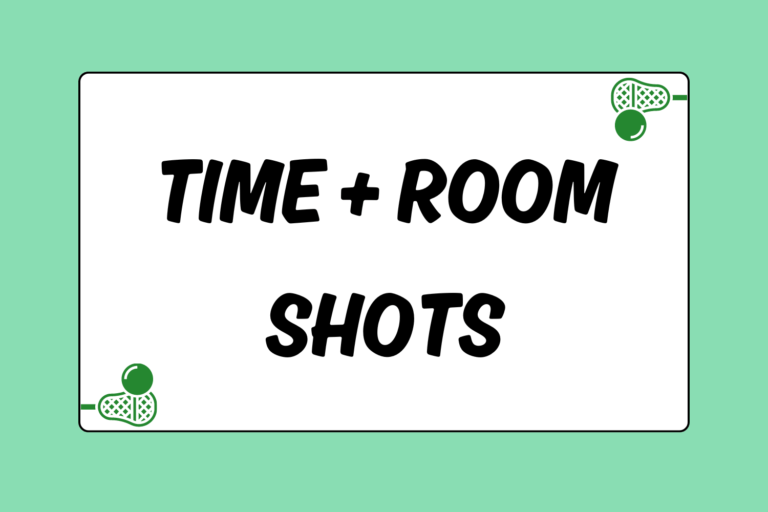Tired legs don’t make for much success at tryouts. It’s usually really obvious right from the start which guys on a team have prepared for a season – and which guys haven’t. Being in good shape is critical for a player to reach his goals. Use these simple methods for getting ready for the season and you’ll be good to go:
Getting in Shape
Lots of teams have what’s called a “Hell Week” at the beginning of a season, and depending on whether or not a player is in good physical shape, this week can be either heaven or hell for a player. It takes about two months to physically prepare oneself for a season, and more work should be done than just running or weight training. Both are vital for being able to take the grind of the season and then still have gas left in the tank for a playoff run. However, there are a few other training methods a player should follow to have a good season.
Improving footwork is an underrated way to improve as a player. So much of what lacrosse players do on the field relies on having quick feet and proper footwork. Yet, this aspect of physical conditioning gets ignored by many coaches.
A great way to improve footwork is to lay down a training or agility ladder and go through a few routines repetitively. Ladders can be purchased for a pretty reasonable price (around $30 or 40). Here are examples of a few good ladder routines:
- Simple running through the ladder, one foot per square. Knees should be high on each step and heels should not touch the ground.
- Running through, touching both feet in each square, leading with the same foot every time.
- The “Cross-Country Skier” – standing at one end, with hips facing the side of the ladder, feet alternate “gliding” forward one foot at a time, landing centered in the square and then gliding back outside the ladder. One foot per square. Simultaneously, hips should be moving along the ladder, staying parallel to the side. Toes and chest should be pointing forward for the whole time. Feet should never cross.
- The “Typewriter” – similar to the cross-country skier, player stands on the side of the ladder, hips facing the side. Right foot in, left foot in, right foot out, left foot out, all the way down the side of the ladder while keeping the hips parallel to the ladder’s side. Emphasis on keeping heels off the ground, and planting the foot squarely in the middle of the ladder square.
These are just a few of many possible ladder drills that can be used to condition one’s feet to be quicker. When first starting ladder training, the focus should be on correct technique, rather than going through the routine at maximum speed. There are plenty of YouTube clips that go into great detail on form and technique.
Another excellent way to improve footwork and lower body coordination is with a jump rope. Jump ropes are inexpensive and they don’t take up a whole lot of space. Dedicating 20 minutes per day to a jump rope routine can very quickly improve a player’s footwork and foot speed.
Footwork is important, but so are a few other areas of conditioning. Having the stamina to play an entire game and make it through all those grueling practices the coach likes to run is crucial. Stamina is mostly built through distance running and cardio work. Doing something as simple as running around five or six miles per week for the two months prior to the season should be pretty adequate in getting a player the stamina he needs. Start off by doing a mile at a time, maybe three to four times per week. Once this distance becomes easy, try stepping up to two miles at a time. About two to three months of distance training should be adequate enough for gaining the stamina a player needs.
Weightlifting can help a player improve his overall strength, but heavy lifting is not recommended for players who have yet to fully physically mature. Players who lift weights should do so in order to get toned, rather than trying just to get huge muscles. At these ages, the body is growing at such a rapid rate that weightlifting can be damaging to the muscle structure. The goal of weight training is not to get hugely buff, but rather to improve core strength and tone the muscles most vital to a lacrosse player. Lacrosse players need to be lean enough that they don’t lose their flexibility and agility, which are both key components to having success on the field.
Core-strengthening exercises are highly recommended, since so many of the actions on the lacrosse field rely on core strength. Some good exercises are:
- Crunches: Lie down flat on the floor with your knees bent and your hands either behind your head or crossed on top of your chest. First, take a few deep breaths, then, contracting your abdominal muscles, lift your head and shoulders up, bringing your chest towards your raised thighs. Lower your head and shoulders back slowly to the floor. Repeat 10 to 15 times.
- Plank: This exercise works all of the core muscles, including your upper and lower body. Lie down flat, facing the floor. With your elbows bent, place your forearms and palms flat on the floor and lift your whole body off the floor so that you are resting only your forearms and toes. Maintain this position, tightening your core muscles, for about 30 seconds.
Hot Tip: Building Chemistry
Building team chemistry is not something that should start in-season. The offseason training is a great way to improve overall team chemistry. Players working hard together and seeing results will have a better appreciation for how hard their teammates are working, and how bad those guys want to win games.
Improving Stick Skills
Having above-average stick skills in the early season can quickly separate a player from their teammates. Getting comfortable with the stick can take a few months, but it really can elevate a player to the next level, where he can become a star. Coaches preach it all the time, and players tend to tune it out sometimes because they get tired of hearing it over and over. However, hitting the wall is by far the best way to improve stick skills.
Stick skills will improve through muscle memory and getting an improved feeling for how your stick throws, holds and catches the ball. Hitting the wall quickly strengthens those areas. The best way to practice this without getting bored is to do it over the summer or on a lazy weekend day when there’s nothing to do. Take the IPod out to the wall and throw on some tunes that get you fired up. Once you’ve got the sweet tunes blaring in the ears, it’s time to build that muscle memory and feel for the stick.
Here’s a good wall hitting routine that should be done three to four times per week in order for the player to see real results. Stand about 7 to 10 feet away from the wall and aim for the same spot every time you throw (about eye height on the wall), maybe a particular brick or spot that stands out…
- Throw right, catch right: Throw with the right hand and catch the ball with the right hand 50 times.
- Throw left, catch left: Same as previous, but with left hand instead of right.
- Throw right, catch left: Throw the pass with the right hand and quickly put the stick in the left hand to catch the ball on the rebound. 50 reps
- Throw left, catch right: Same as previous, with opposite hands being used. 50 reps
- Throw right, catch right, change hands, throw left, catch left: Throw and catch with the same hand, then quickly change hands and repeat on the other side. 50 reps
This routine should take about an hour. Learning to be comfortable with the offhand will take some time and will feel awkward at first, but being able to play effectively and confidently with the offhand is more important in lacrosse than in any other sport. After a few days of hitting the wall consistently, it should feel almost natural, and before long, the player will be able to throw, catch and shoot with the offhand just as easily as with the dominant hand.
Mental Focus
Being mentally prepared for a long and tiring season plays a big part in a player’s success. Before the season, players should set goals for themselves. Setting expectations high is not a bad thing, but a player should never let the personal goals come before the goals of the team. Personal goals are things a player should hope to achieve, and if he does it’s a bonus, whereas team goals are things that a player and team should expect to achieve. Remember not to get selfish with the personal goals, as this can get in the way of team success, which is the ultimate goal for any lacrosse player.
Write these goals down and refer back to them throughout the course of the season. This will help you maintain focus. Try writing down three goals for yourself and three for the team.
Examples of personal and team goals are:
Personal
- Be named team captain
- Make first team all-league
- Recruit three new players to the team
Team
- Win league championship
- Beat rival
- Qualify for state playoffs
Worth the Work
Preapring yourself for the rigors of a long and grinding lacrosse season takes hard work. This will all be well worth it though, when you’re in the best shape of your life and have strong bonds with teammates. Get as many teammates out as you can to work with you during the dog days of summer and the cold winter mornings.





